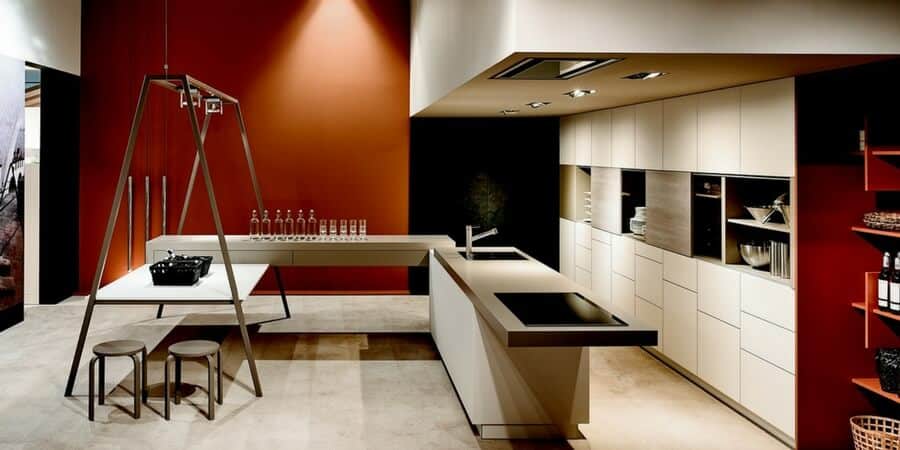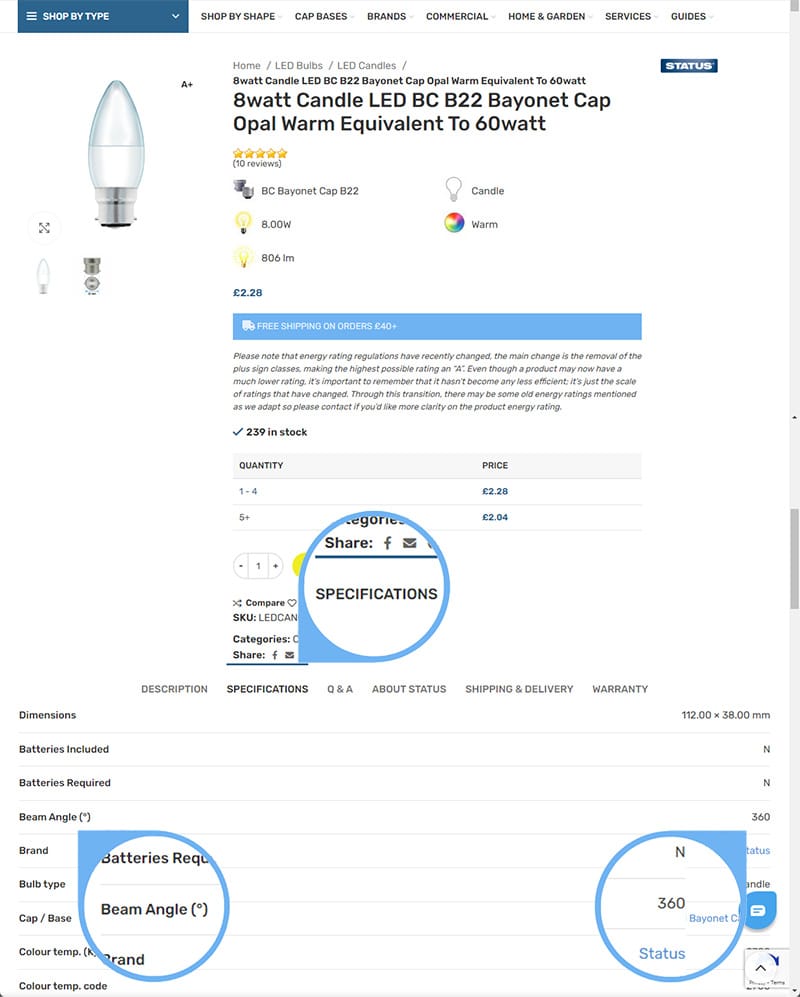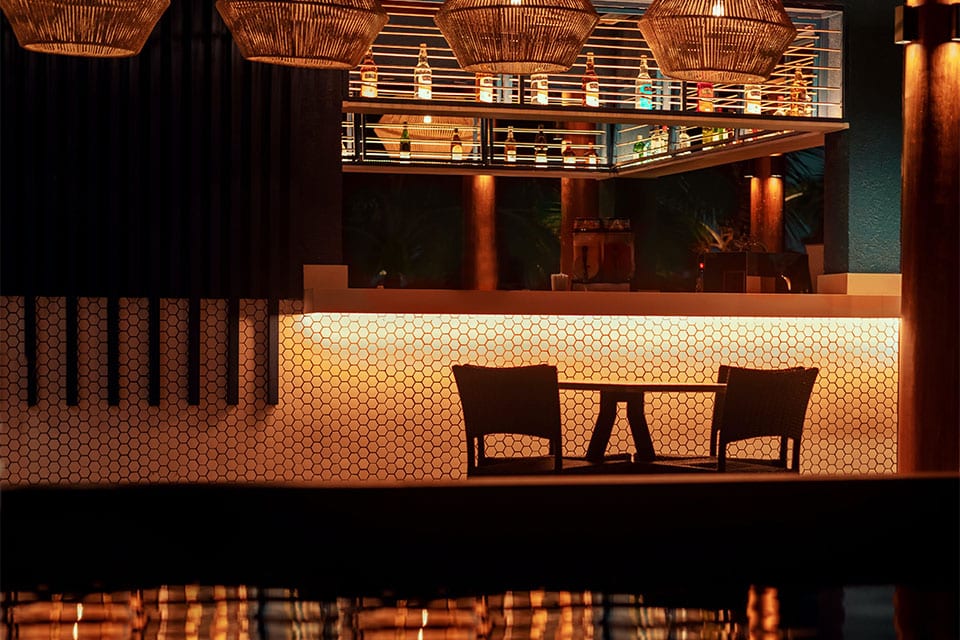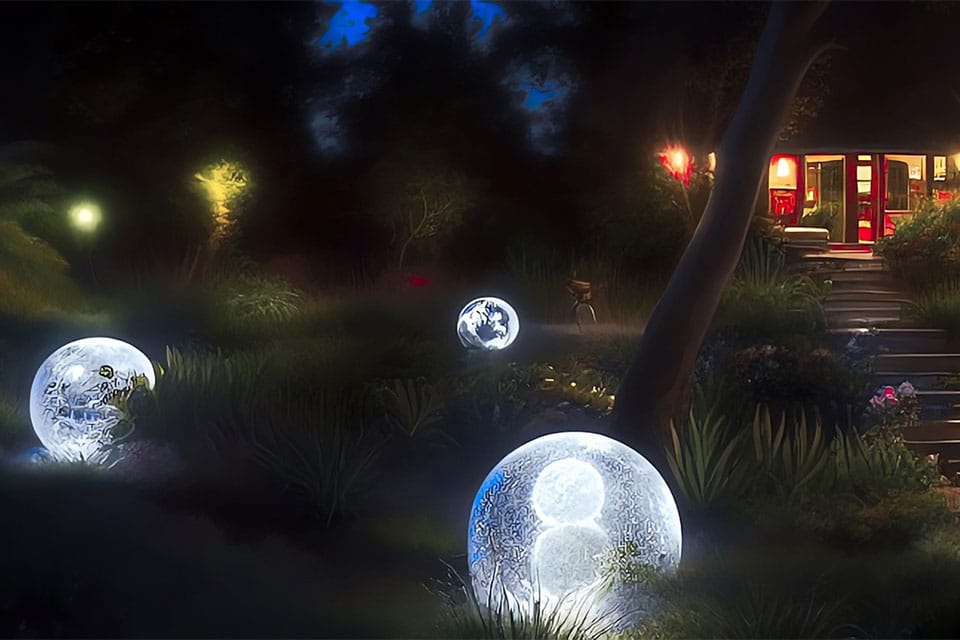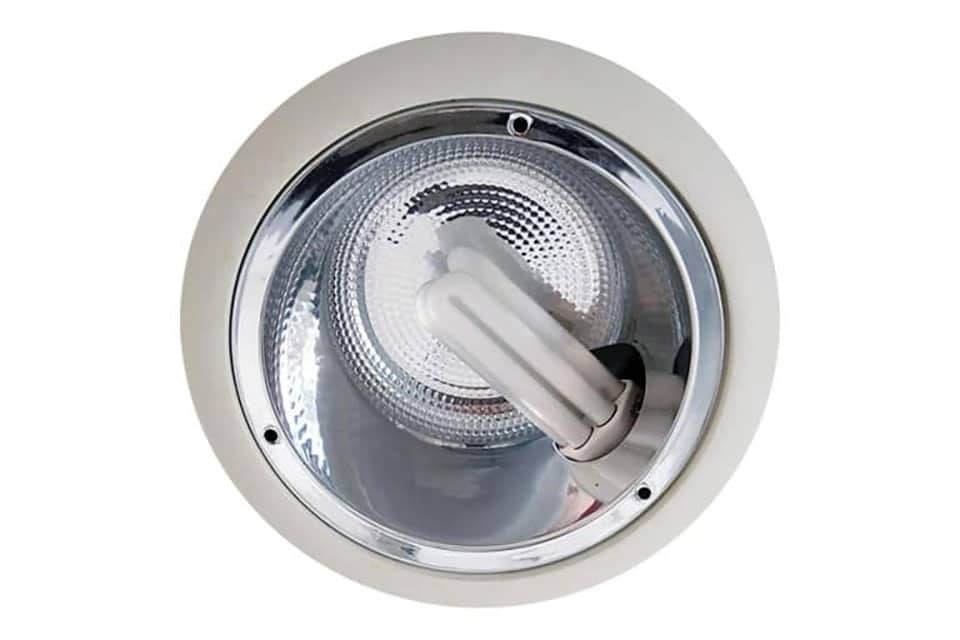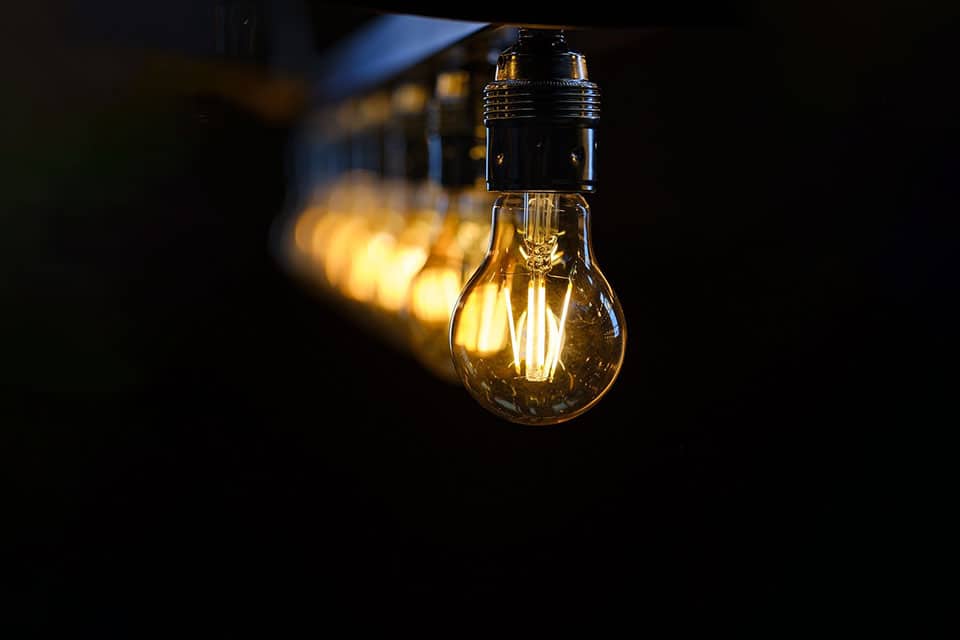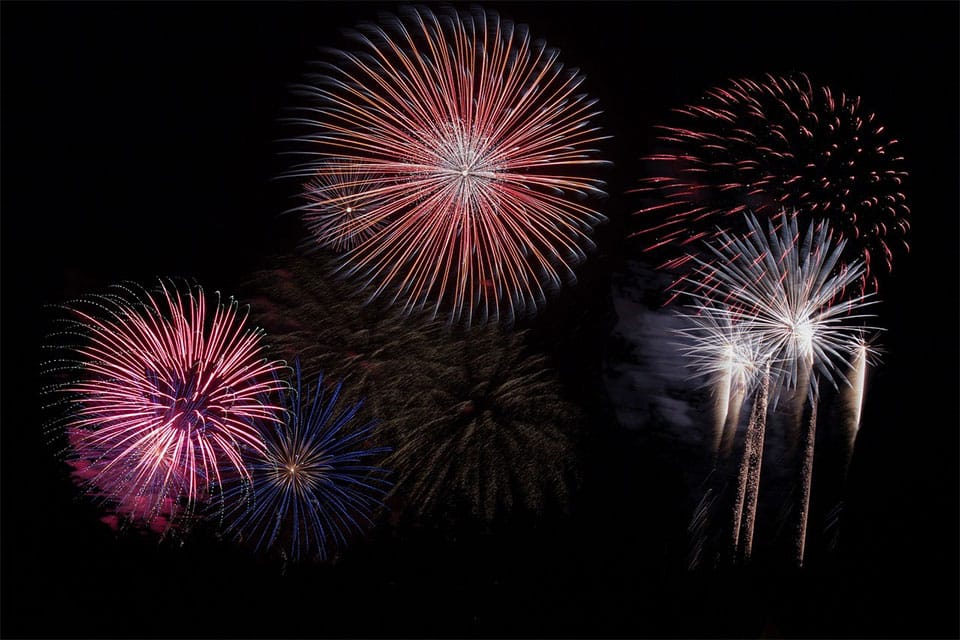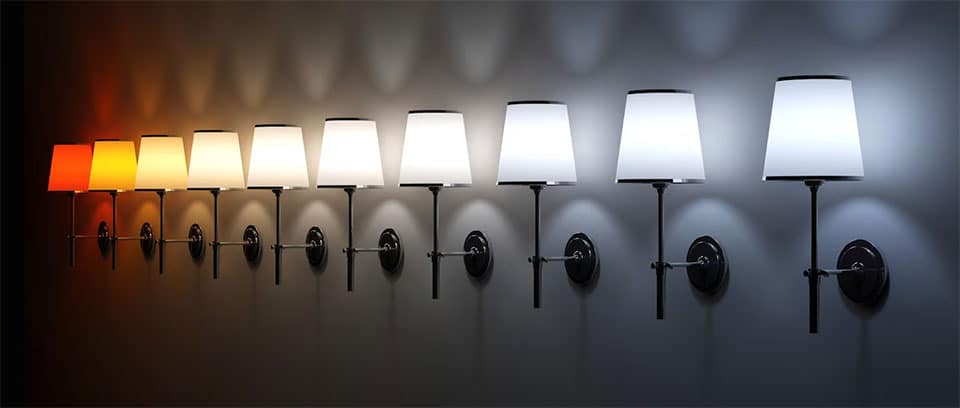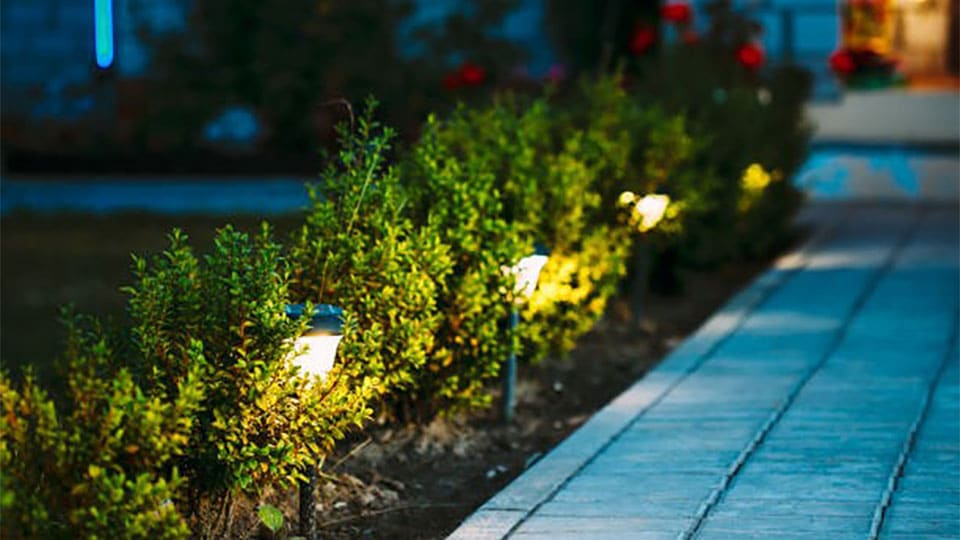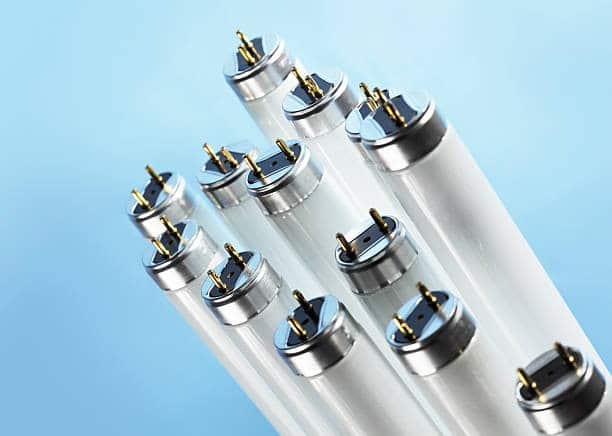Anything that produces light has a beam angle.
A beam angle, sometimes referred to as “beam spread”, measures how light is distributed from the source of illumination onto a target area. The beam angle specifically refers to any light that falls within 50% of the maximum intensity the bulb is capable of producing. Any light outside of this angle is referred to as the “beam field” or “spill light”, which extends until the light has decreased to 10% of the maximum intensity.
Regardless of the size of the beam angle you select, it is only the intensity of the beam (measured in candelas) that changes. The level of brightness, or , stays the same.
For example, if you take a torch and move it closer or farther away from a wall, the light changes. The closer you get, the more focused or intense the beam of light becomes. When you move the torch farther away from the wall the beam becomes wider, but the level of brightness it produces hasn’t changed. It’s still just as bright, it’s simply dispersing the light differently. So, if you wanted a brighter torch, you would need one with a higher lumen value, not a narrower beam angle.
How to Determine Beam Angle
The beam angle of a light bulb is often visible on the package. In most cases, it is visible as a numerical value (in this instance, 200˚) located within something that looks similar to a triangle, but is an angle symbol topped by a line with two arrows on either end that indicates beam spread.
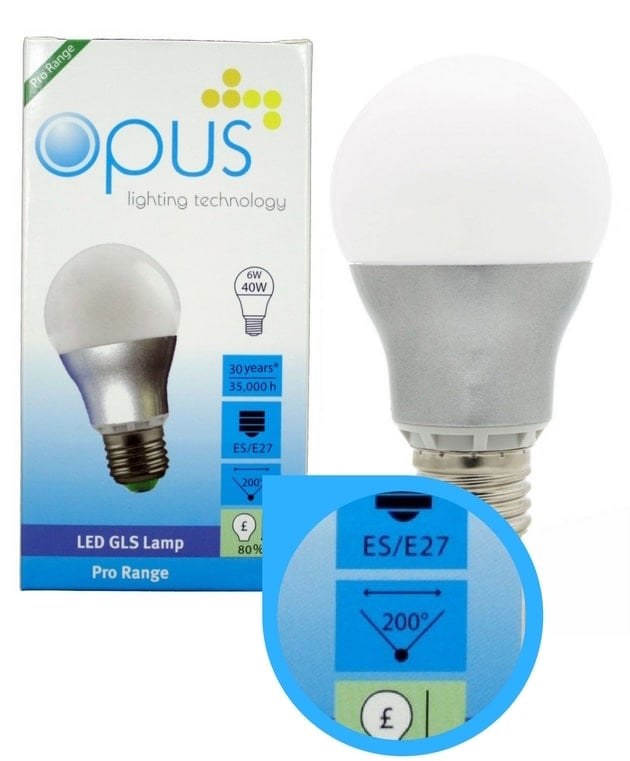
On our website, the beam angle of a light bulb can be determined by going to the product page of the bulb you want to purchase and clicking on specifications, which is located below the light bulb image.
Once you have selected Specifications, scroll down to Beam Angle (˚). The number listed beside it in the row is the beam angle of the bulb.
How to Select Beam Angle
There are a few things you should keep in mind when you’re selecting a beam angle:
- The room you’re illuminating
- The number and distribution of light fixtures
- Ceiling or fixture height
- The light bulb itself
- Your desired ambience
Let’s take a closer look at each of these considerations:
The Number and Distribution of Light Fixtures
When selecting beam angle, it’s important to note how many different fixtures you have to work with, as well as the distance between these light sources. Think about whether you want overlapping beams to create general lighting and ambience, or whether you’d prefer isolated pockets of light. This is especially important if you are working with overhead recessed lighting.
PRO TIP: To achieve overlapping or connected beams, make sure that the diameter of the beam angles is equal to or greater than the distance between light fixtures.Ceiling or Fixture Height
The right beam angle for your space will be determined by the distance between the light and the object or area it is illuminating.
If you have very high ceilings, you will need a narrower beam angle for both recessed and overhead lighting in order to successfully illuminate the area. A wider beam angle is not as intense as a narrow beam and the beam will not reach down as far, but the light will spread out farther.
The Light Bulb
The type of light bulb you select impacts which beam angles you are capable of achieving. This is because different bulbs have different strengths. For example, an old fashioned incandescent GLS bulb would have a 360° omnidirectional beam angle, but since most LED GLS bulb are comprised of 50% glass and 50% plastic, they only emit about a 200° angle.
LEDs work well for for a number of applications because they are available in a range of designs. They are excellent for task lighting and targeting certain areas because they are capable of emitting light in one direction, which decreases the number of wasted lumens.
On the other hand, incandescents and CFLs work well for general illumination because they send light out in all directions. But, if you favour incandescents or halogens over LEDs and want to limit wasted light, reflector lamps provide more light control and help produce a narrower beam.
PRO TIP: Increasing or decreasing the beam angle will only affect the intensity of the beam (which is measured in candelas), not the level of brightness. To increase the level of brightness, select light bulbs with a higher lumen value.Choosing a Beam Angle for Residential Use
Deciding where you require light is a key factor when choosing a beam angle. Ceiling height, the dimensions of the room, and the number of fittings can help you determine the a beam angle that will direct light precisely where it’s needed. Using a combination of beam angles can also help to build layers of light by adding visual interest and creating pockets designed for specific tasks, such as reading areas.
In a typical home, a standard, medium-sized beam angle of around 40 degrees for ceiling fixtures is generally all that is needed to properly light a room. This number will fluctuate based on ceiling height and the number of other fixtures in a given area.
For living rooms and lounge areas that don’t require as much light, a wider beam angle of around 60 degrees might be all that you need for your overhead lamps.
In areas with higher ceilings, such as in stairwells, a narrower beam angle will likely be necessary to properly illuminate the target area. For ceilings 3 metres or higher, a beam angle of 25 degrees or narrower is recommended.
When it comes to commercial lighting, efficiency, effective task lighting, and aesthetics are often the most important factors when selecting beam angle. Narrower beam angles are the most popular for commercial use because businesses typically have different lighting needs and higher ceilings than residential buildings.
PRO TIP: To effectively use beam angles for accent lighting, make sure to match the beam spread to the size of the artwork or object being illuminated. For most items, you will want a beam angle between 10 and 30 degrees.Choosing a Beam Angle for Commercial Settings
Like choosing a beam angle for residential use, ceiling height, room dimensions, and the number of fixtures are the most important considerations when choosing a beam angle for commercial settings. But when you’re choosing a beam angle for commercial use, you also need to consider what exactly you will be lighting.
Here are a few examples:
- In a retail setting, showcasing the merchandise with flattering light is key. This means using a variety of beam angles to decrease shadows and limit glare so consumers can easily see the merchandise, while also drawing attention to displays and sales. For example, a jewelry store might choose a narrow beam angle, around 8-10°, for the inside of their display case to make their products pop. This narrow beam angle will add a dazzling sparkle and attract customer attention. Meanwhile, a clothing retailer might opt for a 20-30° beam angle, or even 36-60° for shop windows.
- In an office setting, a wide beam angle that disperses light evenly combined with narrow beam angles for personal task lighting is necessary for reducing glare and creating an ideal workspace for employees.
- A warehouse or distribution centre, again, has different needs, with high ceilings and aisle width dictating the beam angle required to effectively light the area and create a safe work environment.
Specific beam angles are not necessarily limited to residential or commercial applications. Often, they can be effective and important in both types of locations.
This chart breaks down some of the different ways varying beam angles can be used in residential and commercial use:
Residential | Commercial |
|
|---|---|---|
| Narrow | At home, a narrow beam angle can be used to create a focal point, drawing attention to a prized piece of artwork, family photo or trophy. It also works well for task lighting. | In commercial settings, a narrow beam angle is often used to emphasize or highlight artwork, displays, architectural features, and merchandise. Narrow beam angles are what give gemstones their enticing sparkle in jewellery stores. |
| Medium | Bulbs with a medium beam angle are ideal for a variety of fixtures and applications, acting as a layer of general or ambient lighting in living rooms and other common areas . | Medium beam angle bulbs are used almost everywhere, often adding a layer of ambient lighting to a store or restaurant. |
| Wide | A wide beam angle is well-suited for general lighting at home, effectively covering a larger area with light. They are often used for motion-sensing security lights or recessed lighting both in and outdoors. | Bulbs with wide beam angles often act as general lighting in commercial environments, usually by providing overhead illumination in the form recessed lighting. |
| Very Wide | A very wide beam angle illuminates an area without creating a focal point, making them a great choice for low-ceiling pot lighting and flood lamps. | Very wide beam angles are most often used as street lamps or security lighting. |





















































































